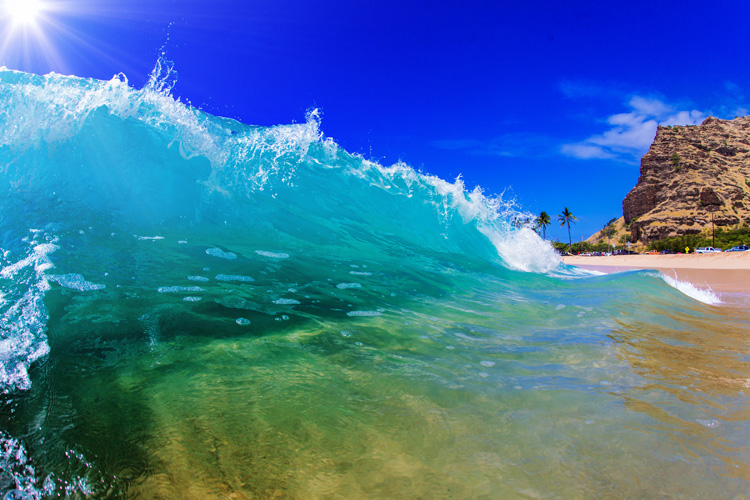Waves are an unstoppable force - at least until they break - but can they be classified into groups? Experts in fluid dynamics have the answer, and the interaction between the ocean floor and the beach is definitively decisive.
Oceanography has all the answers to classic surfing questions and enigmas. Science teaches surfers how ocean waves are formed and why they break as they do.
There are multiple variables at stake: sun, wind, energy, geographical obstacles, tides, and many other factors.
Experienced surfers know how and when the waves are breaking perfectly.
For avid wave hunters, perfect waves are waves that peel continuously from left to right, or vice-versa, rather than closing out abruptly.
Surfers can be picky. Wave explorers need the right swell angle, a special ocean bottom, and favorable wind speed and direction to ride long, joyful waves.
There is a huge difference between taking off on a wave and riding it for 100 yards (91.4 meters) and surfing a wave for five seconds.
There are four types of breaking waves: spilling, plunging, collapsing, and surging. And that's all we can expect from Mother Nature. It's all there is.
Square waves, also known as cross seas, are a rare, non-standard type of wave pattern.
They are the result of a confluence of two different swells traveling at a perpendicular angle.
Discover them and improve your surfing:
Spilling Waves

Spilling waves are waves that are produced when the ocean floor has a gentle slope.
As the wave approaches the shore, it slowly releases energy, and the crest gradually spills forward down its face until it is all whitewater.
These waves take more time to break than any other wave. Surfers usually call these waves "mushy waves."
Plunging Waves

Plunging waves are formed when the incoming swell hits a steep ocean floor or a sea bottom with sudden depth changes.
As a result, the wave's crest curls over and explodes on the trough. The air under the lip of the wave is compressed, and a crashing sound is often heard.
Plungers are more common in offshore wind conditions.
Surging Waves

Surging waves are produced when long-period swells arrive at coastlines with steep beach profiles.
The base of the wave moves fast and does not allow the crest to evolve. As a result, the wave almost doesn't break, and there is little whitewater.
Surging waves look friendly but can be quite deadly because of the backwash associated with them.
Collapsing Waves

Collapsing waves are a blend between surging and plunging waves.
The crest never completely breaks, and the bottom face of the wave gets vertical and collapses, resulting in whitewater.
